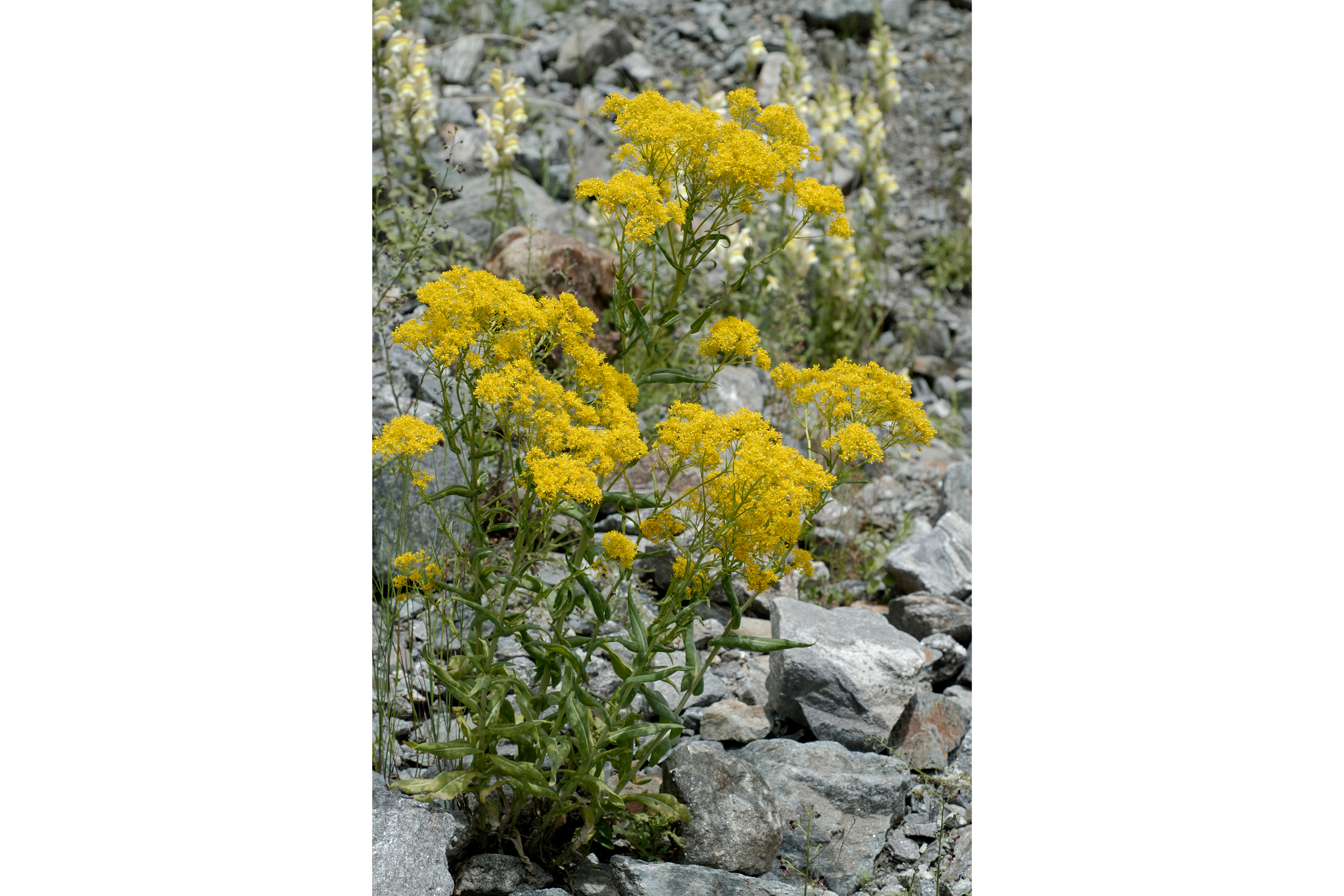Woad
(Isatis tinctoria)

Description
Isatis tinctoria, also called woad, dyer's woad, or glastum, is a flowering plant in the family Brassicaceae (the mustard family) with a documented history of use as an blue dye and medicinal plant. It is occasionally known as Asp of Jerusalem. Woad is also the name of a blue dye produced from the leaves of the plant. Woad is native to the steppe and desert zones of the Caucasus, Central Asia to Eastern Siberia and Western Asia but is now also found in South-Eastern and Central Europe and western North America. Since ancient times, woad was an important source of blue dye and was cultivated throughout Europe, especially in Western and Southern Europe. In medieval times, there were important woad-growing regions in England, Germany and France. Towns such as Toulouse became prosperous from the woad trade. Woad was eventually replaced by the more colourfast Indigofera tinctoria and, in the early 20th century, both woad and Indigofera tinctoria were replaced by synthetic blue dyes. Woad has been used medicinally for centuries. The double use of woad is seen in its name: the term "Isatis" is linked to its ancient use to treat wounds; the term "tinctoria" references its use as a dye. There has also been some revival of the use of woad for craft purposes. The first archaeological finds of woad seeds date to the Neolithic period. The seeds have been found in the cave of l'Audoste, Bouches-du-Rhône, France. Impressions of seeds of Färberwaid (Isatis tinctoria L.) or German indigo, of the plant family Brassicaceae, have been found on pottery in the Iron Age settlement of Heuneburg, Germany. Seed and pod fragments have also been found in an Iron Age pit at Dragonby, North Lincolnshire, United Kingdom. The Hallstatt burials of the Hochdorf Chieftain's Grave and Hohmichele contained textiles dyed with woad. Melo and Rondão write that woad was known "as far back as the time of the ancient Egyptians, who used it to dye the cloth wrappings applied for the mummies." Skelton informs us that one of the early dyes discovered by the ancient Egyptians was "blue woad (Isatis tinctoria)." Lucas writes, "What has been assumed to have been Indian Indigo on ancient Egyptian fabrics may have been woad." Hall states that the ancient Egyptians created their blue dye "by using indigotin, otherwise known as woad.
Taxonomic tree:







